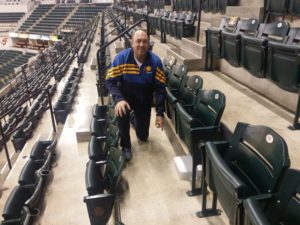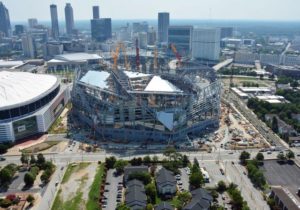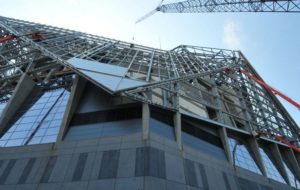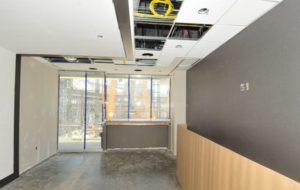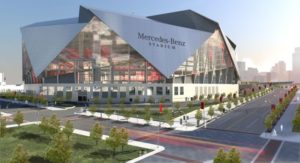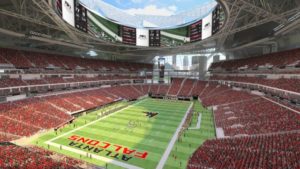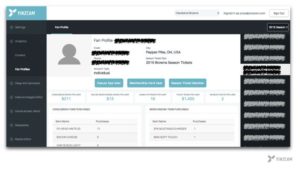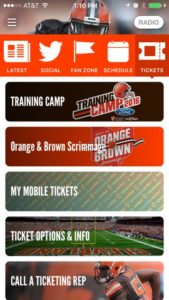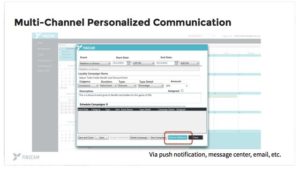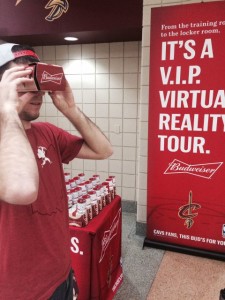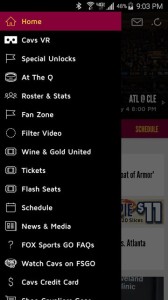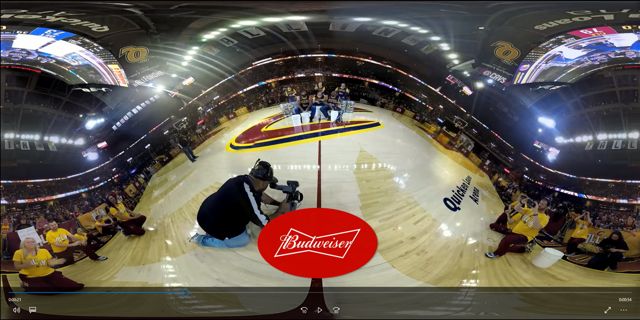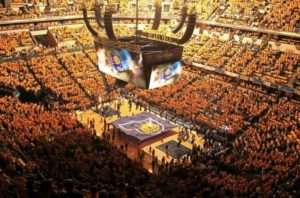
Bankers Life Fieldhouse, home of the Indiana Pacers. Credit all photos: Frank McGrath/Indiana Pacers
For the Indiana Pacers, the biggest surprise in their recent renovation of the Wi-Fi network at Bankers Life Fieldhouse was finding out that their venue already had holes drilled in the concrete under the seats, greatly simplifying (and reducing the cost) of the mainly under-seat deployment that just went live in December.
The new 400-plus AP network, using gear from Ruckus, replaces one of the NBA’s first in-stadium Wi-Fi networks, one built and run by SignalShare using gear from Xirrus. With SignalShare now in bankruptcy and facing legal charges of fraudulent behavior, the Pacers went a different route for their new network, which is part of a plan to bring more digital-based fan services to the 17-year-old venue in downtown Indianapolis, which seats roughly 18,000 for basketball games.
According to Kevin Naylor, vice president of information technology, Pacers Sports and Entertainment, that plan got an unexpected (and welcome) boost when the Pacers’ IT team looked and found pre-drilled holes underneath many of the seats, covered up with temporary aluminum plates. With Ruckus able to use the pre-drilled holes for its under-seat Wi-Fi design, the Pacers were able to save “hundreds of thousands of dollars” in deployment costs, Naylor said.
A new digital plan for fans
Editor’s note: This profile is from our latest STADIUM TECH REPORT, the ONLY in-depth publication created specifically for the stadium technology professional and the stadium technology marketplace. Read about the Sacramento Kings’ new Golden 1 Center and the new Wi-Fi network for the Super Bowl in our report, which is available now for FREE DOWNLOAD from our site!
Leading the venue’s new digital direction is Ed Frederici, chief technology officer, Pacers Sports and Entertainment, who joined the organization in the fall of 2015, after spending almost 6 years as the CTO of ExactTarget, a marketing automation provider that was aquired by Salesforce in 2013.
Though he came into the job “relatively ignorant of sports,” Frederici said he saw “a really interesting problem to solve” revolving around the ongoing evolution of the live-event fan, and who the new attendee was. With a plan to help drive the fan engagement through technology, Frederici, Naylor and the Pacers’ organization began a thorough assessment of Wi-Fi gear providers as part of their plan to bring a new network to Bankers Life Fieldhouse, replacing one that didn’t stand up to current use patterns.
“The old network tapped out when it got to about 3,000 [concurrent] users,” Frederici said.
According to Frederici, the Pacers looked at “all the major providers” of Wi-Fi gear, testing implementations live by putting gear into mobile merchandise-selling stands in use on the stadium concourses. The final decision, Frederici said, came down to a battle between Ruckus and Xirrus, with Ruckus the final winner.Under seat the best option
According to Bart Giordano, vice president for business development and strategic partnerships, for Brocade’s Ruckus business unit, going under-seat with Wi-Fi seems to be the direction large public venues are all headed in.
“It [under seat deployment] is sort of standard now,” said Giordano. “You really need to have users close to the APs, and it’s hard to achieve that with overhead.”
With just over 430 APs in the new network, Frederici was worrying about the drilling costs — until it turned out that most of the drilling had already been done, apparently as part of the arena’s original electrical configuration.
“Seventeen years ago, cables were much thinner, and it looks like [the holes] were cored for electrical,” Frederici said. “But it worked out fabulously.”
And like several other venues have done recently, the Pacers have decided to scrap support for fan-facing services on the 2.4 GHz spectrum, which makes administration of the fan Wi-Fi network easier and cheaper. The team will still keep some 2.4 GHz connections for back of house use.
With 2.4 GHz, Naylor said, “the noise level just got really bad in the lower bowl. It’s much easier to go to [only] 5 GHz. Every phone made now has 5 GHz.” For the older phones, Naylor said, the arena’s neutral-host DAS run by ExteNet Systems can provide connectivity, with AT&T and Verizon Wireless already on the system with plans to add more carriers in 2017.
While the Pacers currently have a basic YinzCam-based game-day app, Frederici is looking forward to more services in the future, including the possibility of having amenities like live parking and traffic information available via the app, as well as blue-dot wayfinding to the seat. For this year, the Pacers have already added concession and restroom wait time alerts to the app, the first step in a planned process of greater digital engagement.
“We want to own the experience from your driveway to the stadium, then back home,” Frederici said. Part of the new network deal includes analytics software services from Ruckus partner Purple, which helps teams mine data from fan interaction with the Wi-Fi network.
“We’re excited to see what kind of data we can pull from them [Purple],” Naylor said.
